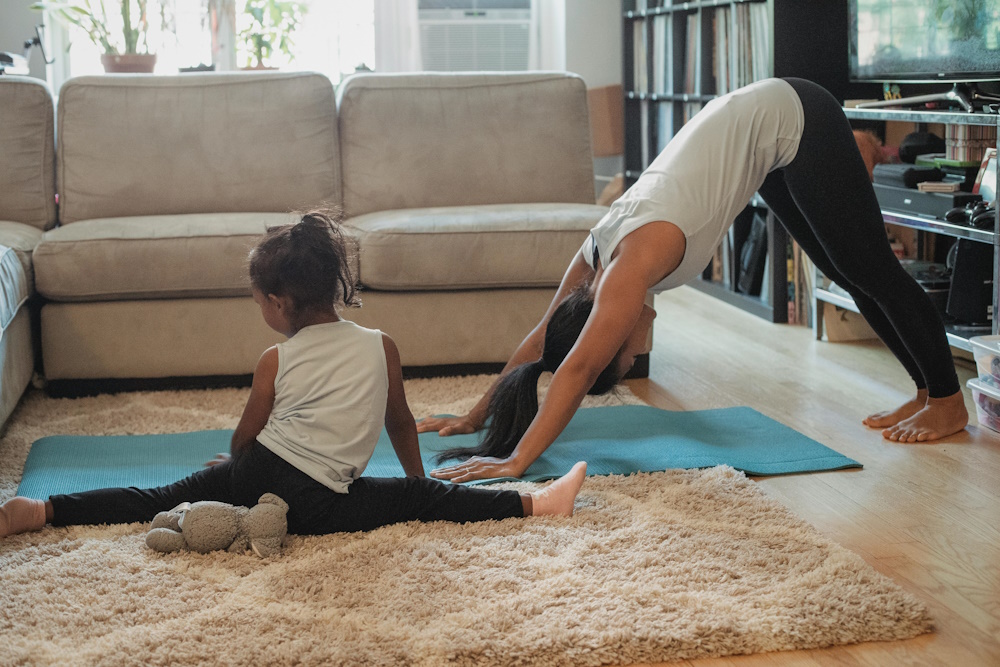transformative journey towards improved strength, flexibility, and overall well-being. Pilates offers a wide range of exercises that can be adapted to various fitness levels and schedules. In this comprehensive guide, we will explore practical strategies for seamlessly integrating Pilates into your everyday life, identify complementary exercises that can enhance your Pilates practice, delve into the 3-2-8 method, and discuss the potential outcomes of doing Pilates every day.
How Do You Incorporate Pilates into Everyday Life?
Integrating Pilates into your daily routine requires a blend of planning, consistency, and adaptability. Here are some effective ways to make Pilates a regular part of your life:
1. Set a Schedule: Establish a specific time slot in your daily or weekly schedule dedicated to Pilates. Consistency is key to making it a habit.
2. Start Small: If you’re new to Pilates, begin with short sessions, such as 15-20 minutes a day, and gradually increase the duration as you become more comfortable.
3. Morning Routine: Consider starting your day with a brief Pilates session to boost energy and set a positive tone for the day.
4. Lunch Break Workouts: Utilize your lunch break for a quick Pilates workout. All you need is a small space and a mat.
5. Evening Relaxation: Wind down in the evening with a gentle Pilates routine to release tension and prepare for a restful night’s sleep.
6. Combine with Other Activities: Pair Pilates with other daily routines. For example, do a few Pilates exercises before or after your morning run or walk.
7. Use Technology: Access online Pilates classes or use fitness apps and videos for guided workouts that fit your schedule.
8. Create a Home Studio: Dedicate a space in your home for Pilates. Having a designated area can make it easier to practice regularly.
9. Accountability Partner: Partner with a friend or family member to do Pilates together, helping each other stay motivated and accountable.
10. Variety is Key: Keep your Pilates practice interesting by trying different exercises and routines to prevent boredom.
What Exercises Can Be Combined with Pilates?
Combining Pilates with other exercises can create a well-rounded fitness routine that targets various muscle groups and enhances your overall physical fitness. Here are some exercises and activities that complement Pilates:
1. Yoga: Yoga and Pilates share similarities in promoting flexibility and core strength. Combining both practices can improve balance and mind-body connection.
2. Cardiovascular Exercise: Incorporate cardio workouts like running, cycling, or swimming to improve cardiovascular fitness and complement Pilates’ focus on strength and flexibility.
3. Strength Training: Resistance training with weights or bodyweight exercises can enhance muscle tone and strength, which pairs well with Pilates for a balanced physique.
4. Barre Workouts: Barre workouts incorporate elements of ballet, Pilates, and strength training, providing a full-body workout that complements Pilates beautifully.
5. Stretching and Flexibility Training: Activities like static stretching, dynamic stretching, and foam rolling can enhance flexibility and mobility, supporting your Pilates practice.
6. Dance: Dance styles such as ballet, contemporary, or jazz can improve coordination, balance, and grace, aligning with Pilates principles.
7. Mindfulness Practices: Mindfulness meditation and deep breathing exercises can enhance the mind-body connection in Pilates and reduce stress.
What Is the 3-2-8 Method?
The 3-2-8 method is an approach to Pilates that involves performing three key Pilates exercises, holding each for two minutes, and completing the routine in just eight minutes. This method is designed to be quick and efficient, making it easy to incorporate into a busy daily routine.
Here’s a simple breakdown of the 3-2-8 method:
1. Select Three Key Exercises: Choose three fundamental Pilates exercises that target different muscle groups and elements of core strength and flexibility.
2. Hold for Two Minutes Each: Perform each of the chosen exercises for a duration of two minutes. Focus on controlled, precise movements and proper form.
3. Eight-Minute Routine: In total, the routine should take just eight minutes to complete. This method allows you to achieve a brief yet effective Pilates session regularly.
The 3-2-8 method is an excellent way to maintain a consistent Pilates practice, especially on days when time is limited.
What Happens If You Do Pilates Every Day?
Practicing Pilates every day can lead to various physical, mental, and emotional benefits. However, the outcomes may vary depending on individual factors such as fitness level, intensity of workouts, and goals. Here are some potential results of doing Pilates daily:
1. Improved Core Strength: Daily Pilates can significantly enhance core strength, leading to better posture and stability.
2. Increased Flexibility: Regular practice can contribute to improved flexibility and range of motion, reducing the risk of injury.
3. Enhanced Mind-Body Connection: Daily Pilates encourages a strong mind-body connection, enhancing body awareness and mindfulness.
4. Stress Reduction: Pilates includes breathing exercises that promote relaxation and reduce stress.
5. Muscle Toning: Daily practice can lead to increased muscle tone and a more sculpted physique.
6. Better Balance: Improved balance and coordination are common outcomes of consistent Pilates practice.
7. Weight Management: When combined with a healthy diet, daily Pilates can support weight management and fat loss.
8. Enhanced Posture: Daily Pilates can lead to better alignment and posture, reducing discomfort and pain.
9. Increased Energy: Pilates can boost energy levels and overall vitality.
10. Emotional Well-Being: Many individuals experience improved mood and emotional well-being with regular Pilates practice.
Incorporating Pilates into your daily routine offers a multitude of benefits, and the specific results will depend on your commitment, effort, and individual goals.
Incorporating Pilates challenges into your daily routine can be a rewarding endeavor. By setting a schedule, exploring complementary exercises, trying the 3-2-8 method, and understanding the potential outcomes of daily practice, you can harness the full potential of Pilates to enhance your physical and mental well-being.
